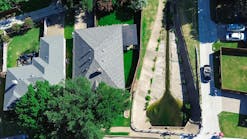Monitoring Instruments Solve Flow Rate Issue
The Glen Walter sewage collection system in the township of South Glengarry, Ontario, Canada, was built to serve 1,080 customers in 1989. At the time, the population was only 850, but by 1995, the plant had already reached capacity. Shawn Killoran, the operations manager for the plant, was concerned about the excess flow.
In 1999, the township selected Stingray Level-Velocity loggers from Greyline Instruments to conduct flow surveys and identify the sources of excess flow. Greyline's meters are portable, work in partially filled pipes and enable technicians to retrieve wastewater flow data without entering manholes.
In 2006, the instruments’ ultrasonic sensors were installed in seven different manholes for periods of three to five days. To deploy each unit, a technician selected a manhole location, attached a stainless steel bracket in the influent pipe and mounted the sealed ultrasonic sensor on the bracket. The watertight electronic logging unit was hung inside the manhole. The logger recorded the date, time, water level, velocity and temperature at 10-second intervals.
An average of 1 cu meter per day per household was used as a baseline for the amount of water used in a 24-hour time interval. Some locations recorded flow rates 15% to 70% higher than statistical flows. The loggers captured spikes in flow matching typical run times from domestic sump pumps. The Stingray is able to monitor water temperature, and corresponding temperature drops matching the pump cycles also were seen, indicating that some residents were connecting sump pumps to the municipal collection system.
Municipal agents went door to door, informing residents that improper sump pump connections had been identified and requesting that any sump or eves trough discharges be disconnected from the municipal system. “After the flow survey, we observed a reduction in influent at the sewage treatment plant,” Killoran said.
Download: Here






